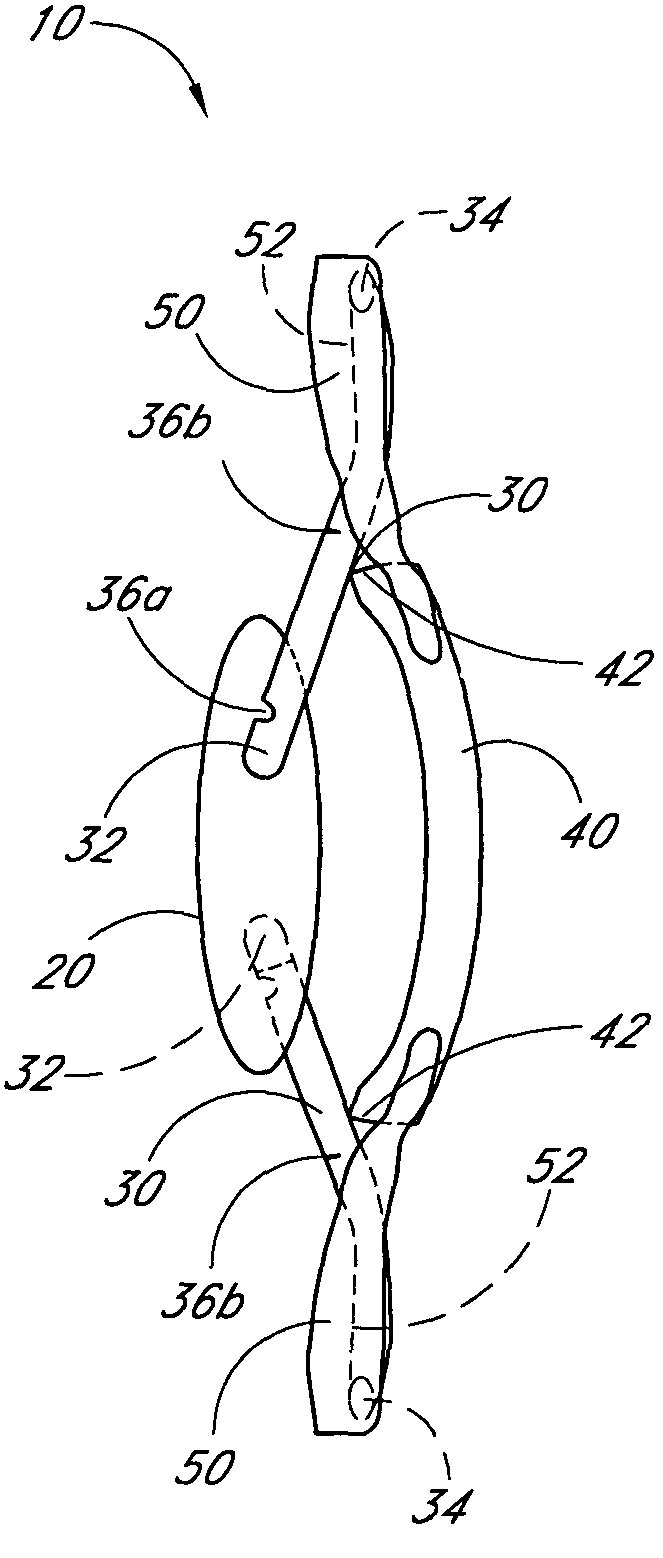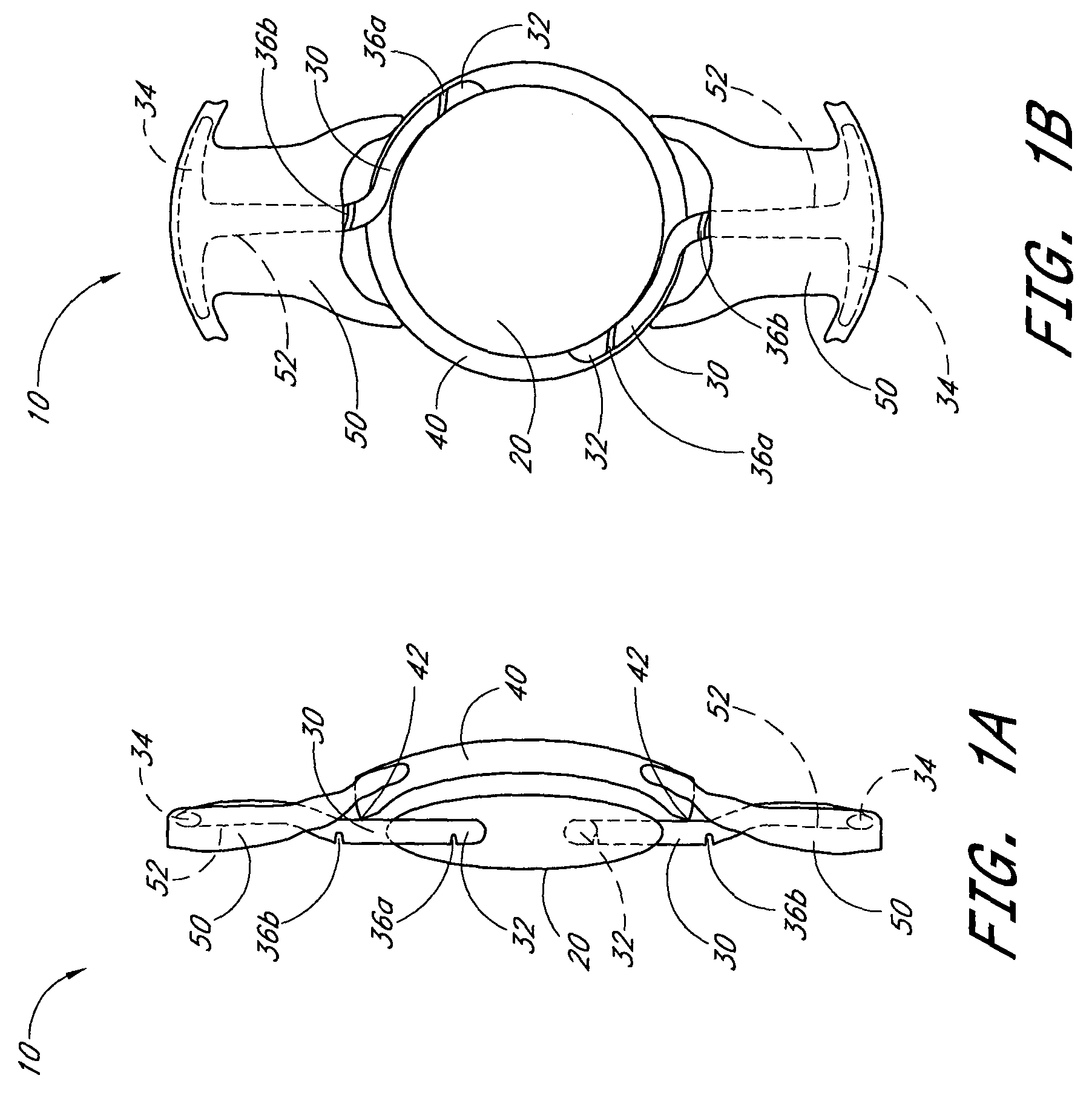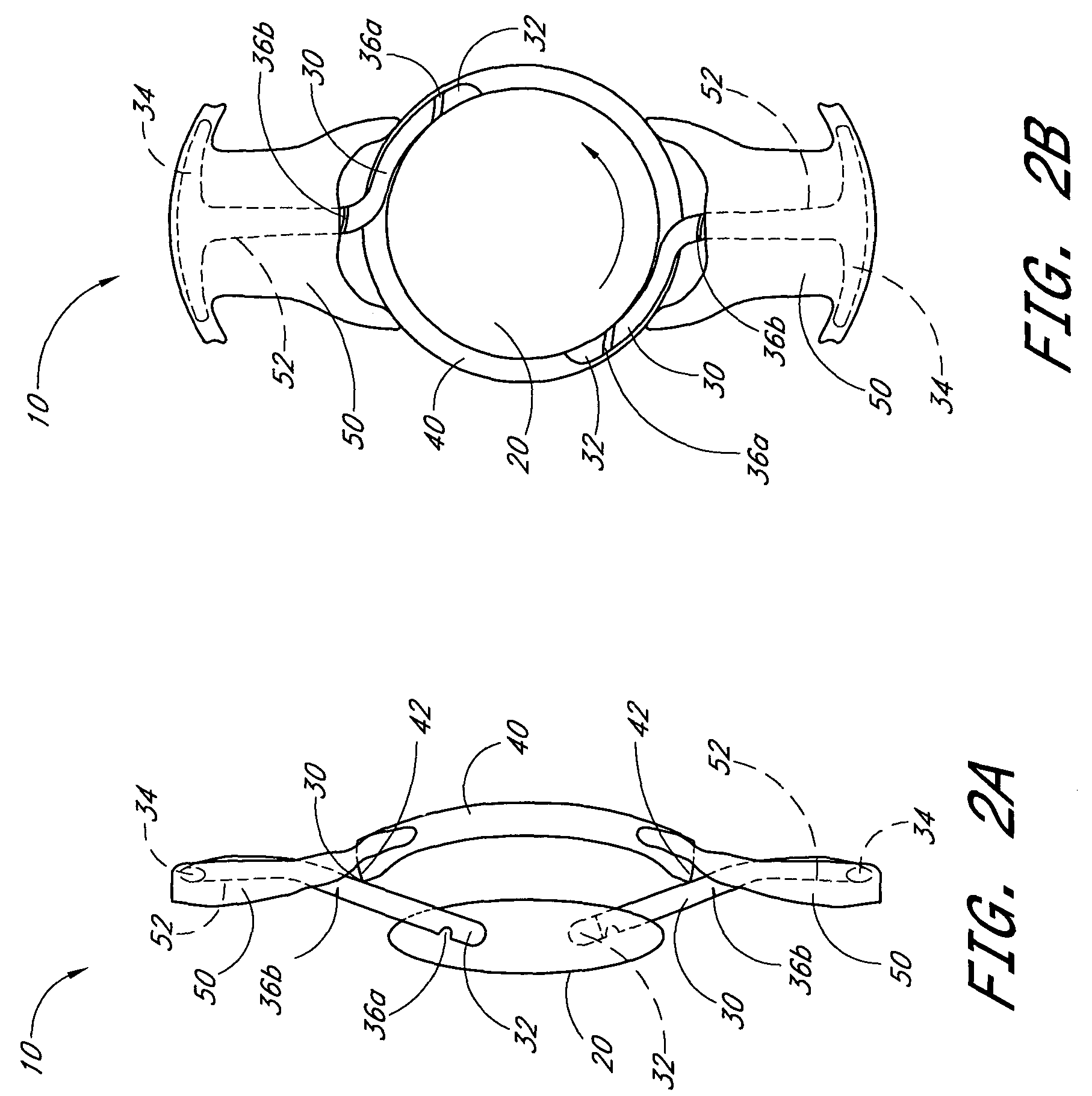Accommodating intraocular lens system with enhanced range of motion
a technology of intraocular lens and enhanced range of motion, which is applied in the field of accommodating intraocular lens systems, can solve the problems of patients experiencing a degradation of their ability to accommoda
- Summary
- Abstract
- Description
- Claims
- Application Information
AI Technical Summary
Benefits of technology
Problems solved by technology
Method used
Image
Examples
Embodiment Construction
[0023]Previous designs of dual optic intraocular lens systems replace the natural lens with an anterior optic and a posterior optic, coupled together by a spring mechanism and implanted within the capsular bag. Such dual optic intraocular lens systems depend on the interaction of the optics with the capsular bag. When the ciliary muscle is relaxed and the zonular fibers are under tension, the capsular bag is pulled at its equator and stretched, thereby bringing the anterior optic and the posterior optic closer together and compressing the spring mechanism. When the ciliary muscle is contracted and the zonular fibers are relaxed, the capsular bag relaxes and the spring mechanism pushes the anterior optic and the posterior optic apart to their equilibrium positions. These relative movements of the anterior and posterior optics provide some measure of accommodation. Such dual optic intraocular lens systems are typically designed to have a high power anterior lens and a combined dioptri...
PUM
 Login to View More
Login to View More Abstract
Description
Claims
Application Information
 Login to View More
Login to View More - R&D
- Intellectual Property
- Life Sciences
- Materials
- Tech Scout
- Unparalleled Data Quality
- Higher Quality Content
- 60% Fewer Hallucinations
Browse by: Latest US Patents, China's latest patents, Technical Efficacy Thesaurus, Application Domain, Technology Topic, Popular Technical Reports.
© 2025 PatSnap. All rights reserved.Legal|Privacy policy|Modern Slavery Act Transparency Statement|Sitemap|About US| Contact US: help@patsnap.com



